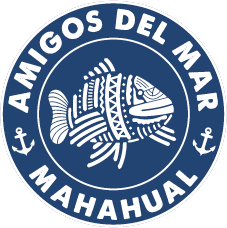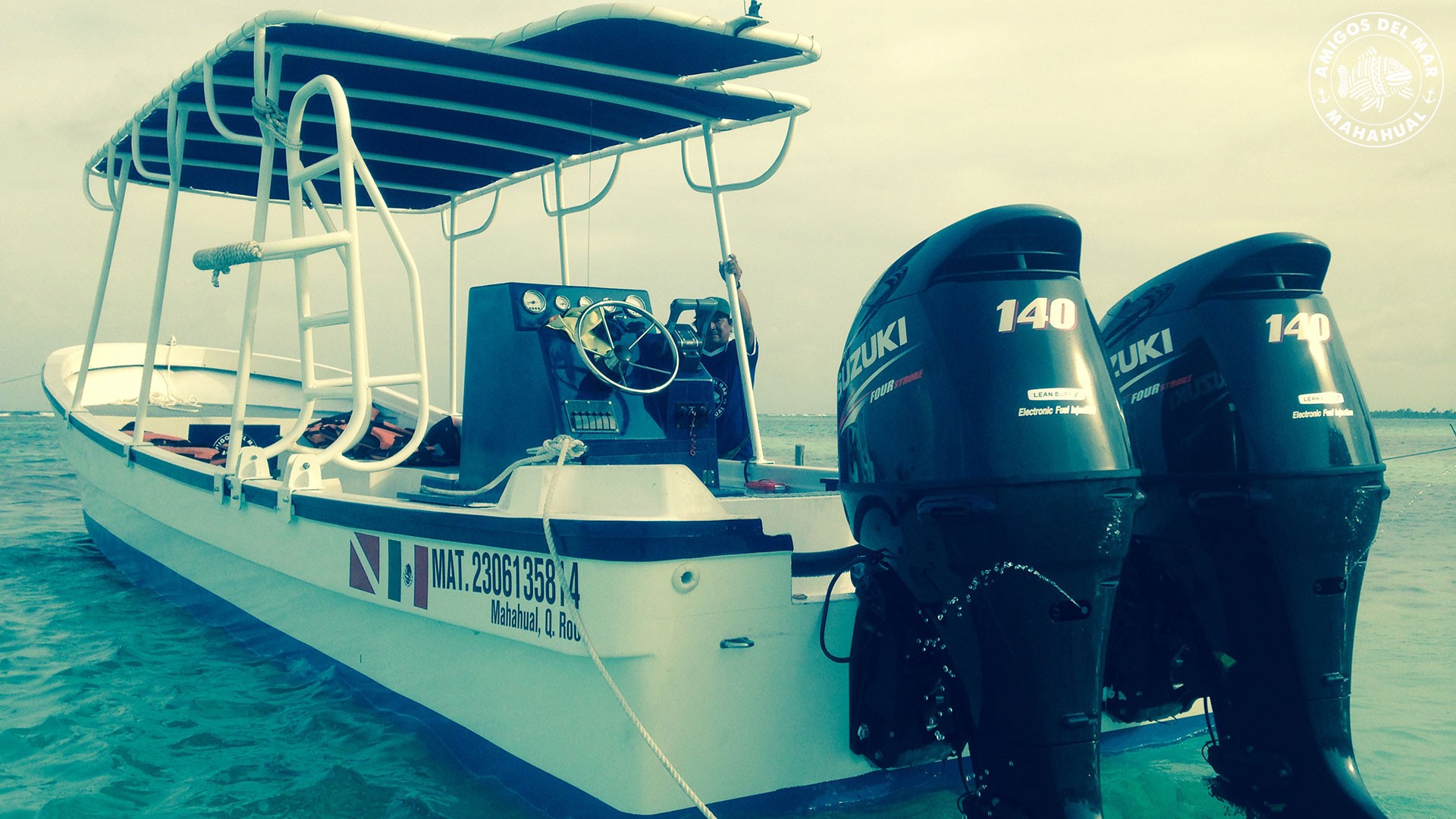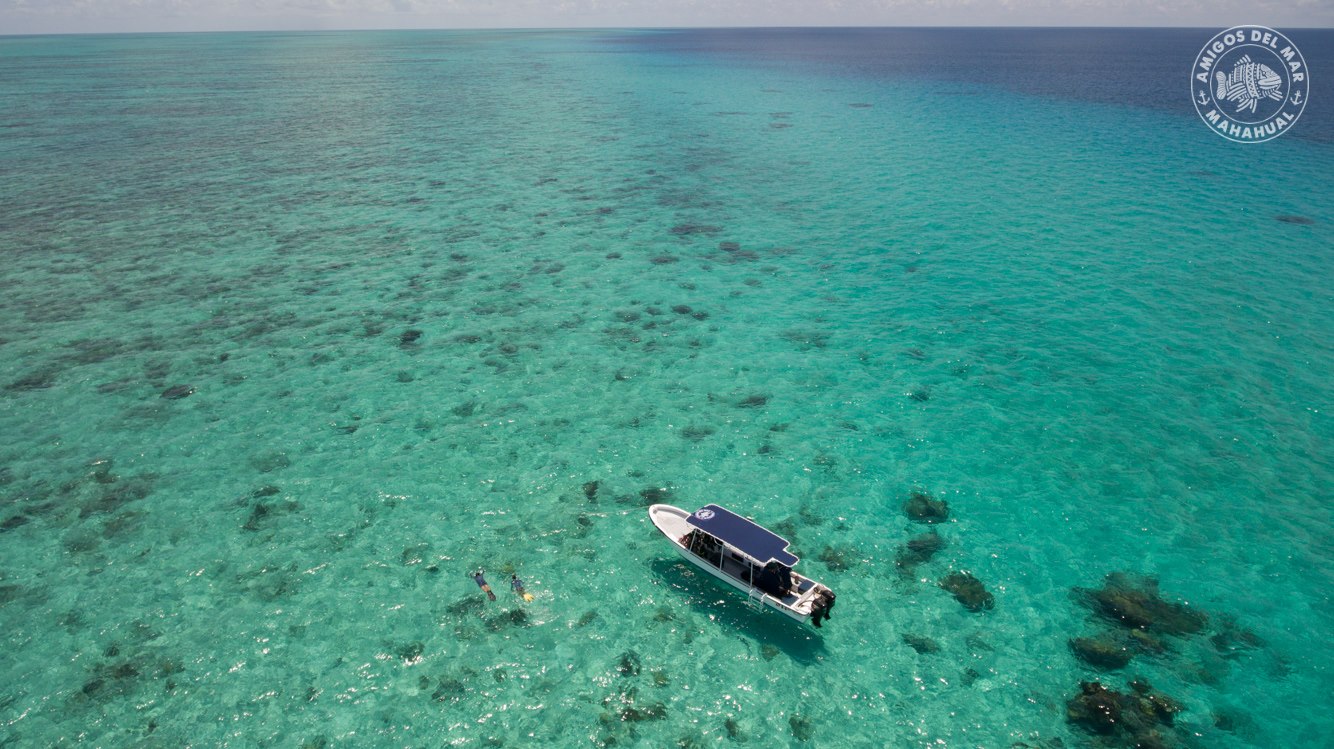Banco Chinchorro Diving

Diving at Banco Chinchorro
About 35kms off the coast of Mahahual lies a mysterious yet wonderful coral atoll, full name Reserva de la Biósfera Banco Chinchorro. This national park, rich in history, is also a graveyard for all sorts of sunken ships. A natural protected area since 1996, it conserves its natural beauty, holding secret to a collection of wrecks scattered alongside the exterior reef. It forms part of the “Tríangulo” a name dating back since the XVI century, also designated by Charles Darwin as part the Triangle Reef. Measuring up to 800sqm with just a mere 1% of land above water, you can be sure that the magic of this place is underwater, that being said, at Banco Chinchorro you definitely have more than one option to choose your dive, depending also on weather and sea conditions and your own comfortability in the water: We have mapped 32 reef dive sites from depth of 10 to 35m and also are a certified dive shop from National Institute of Anthropology and History with access to the Banco Chinchorro Underwater Museum and its dozens of ship wrecks.
Banco Chinchorro Dive Sites

Aquario 1 & 2
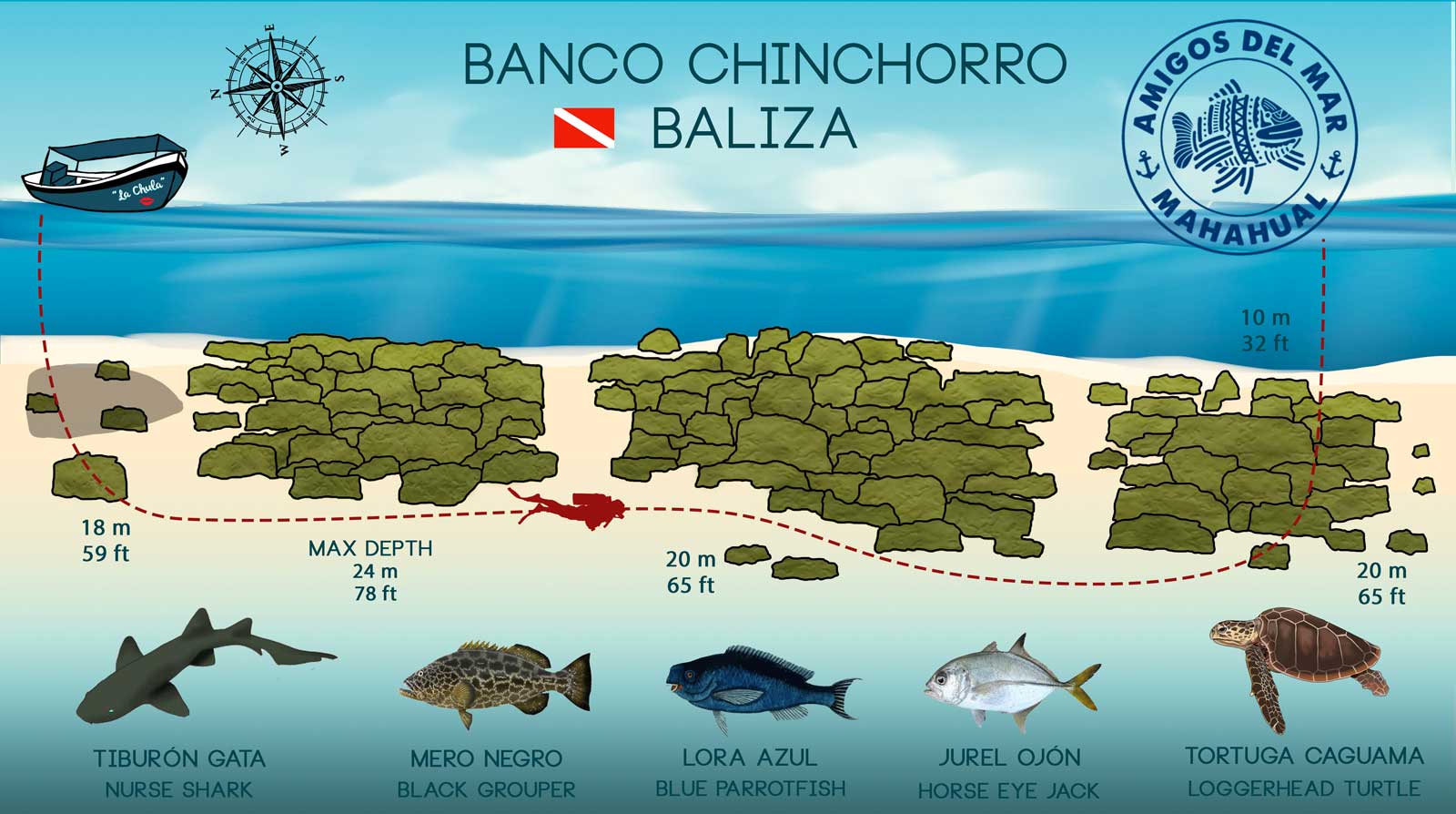
Baliza
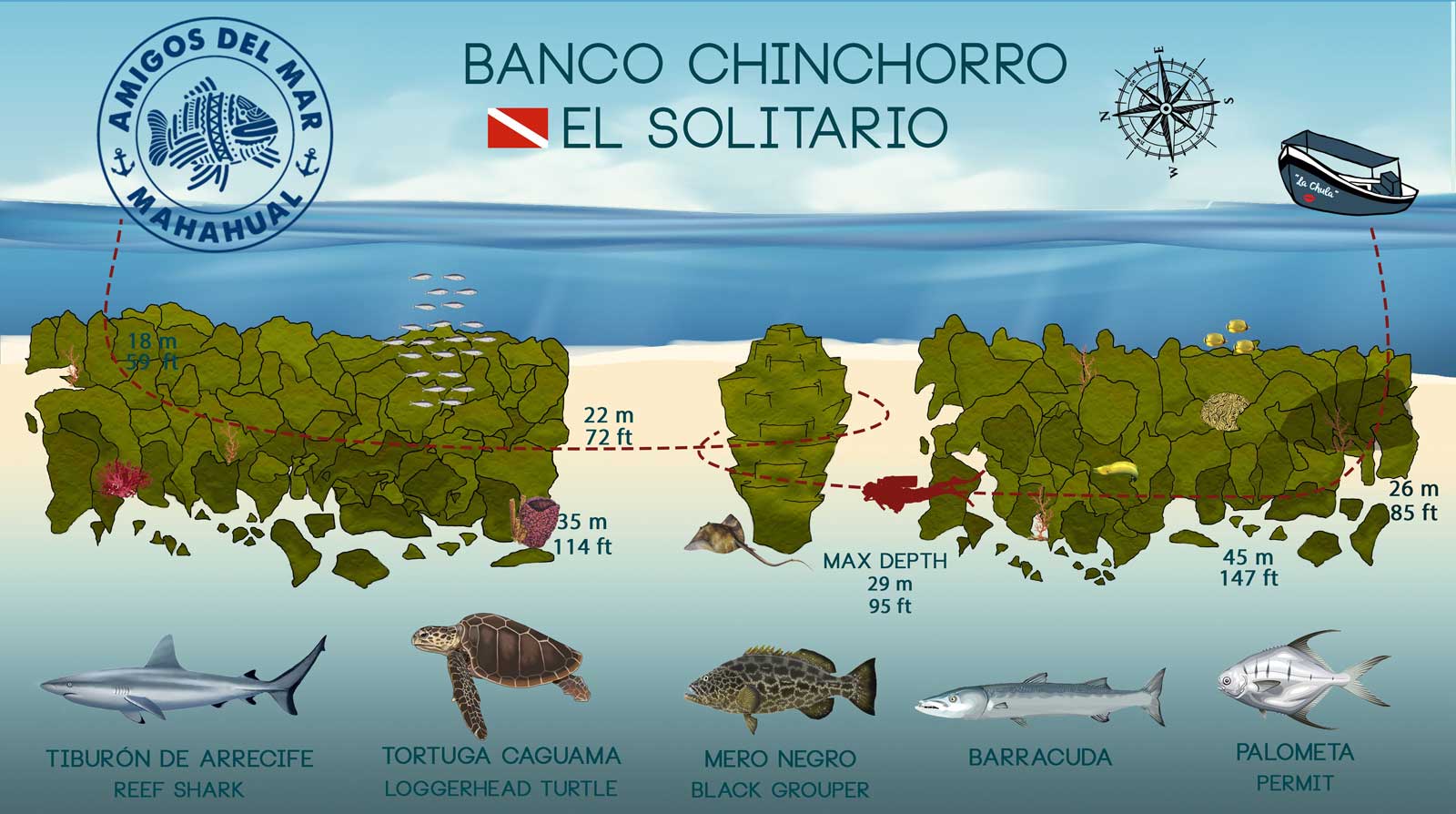
El Solitario
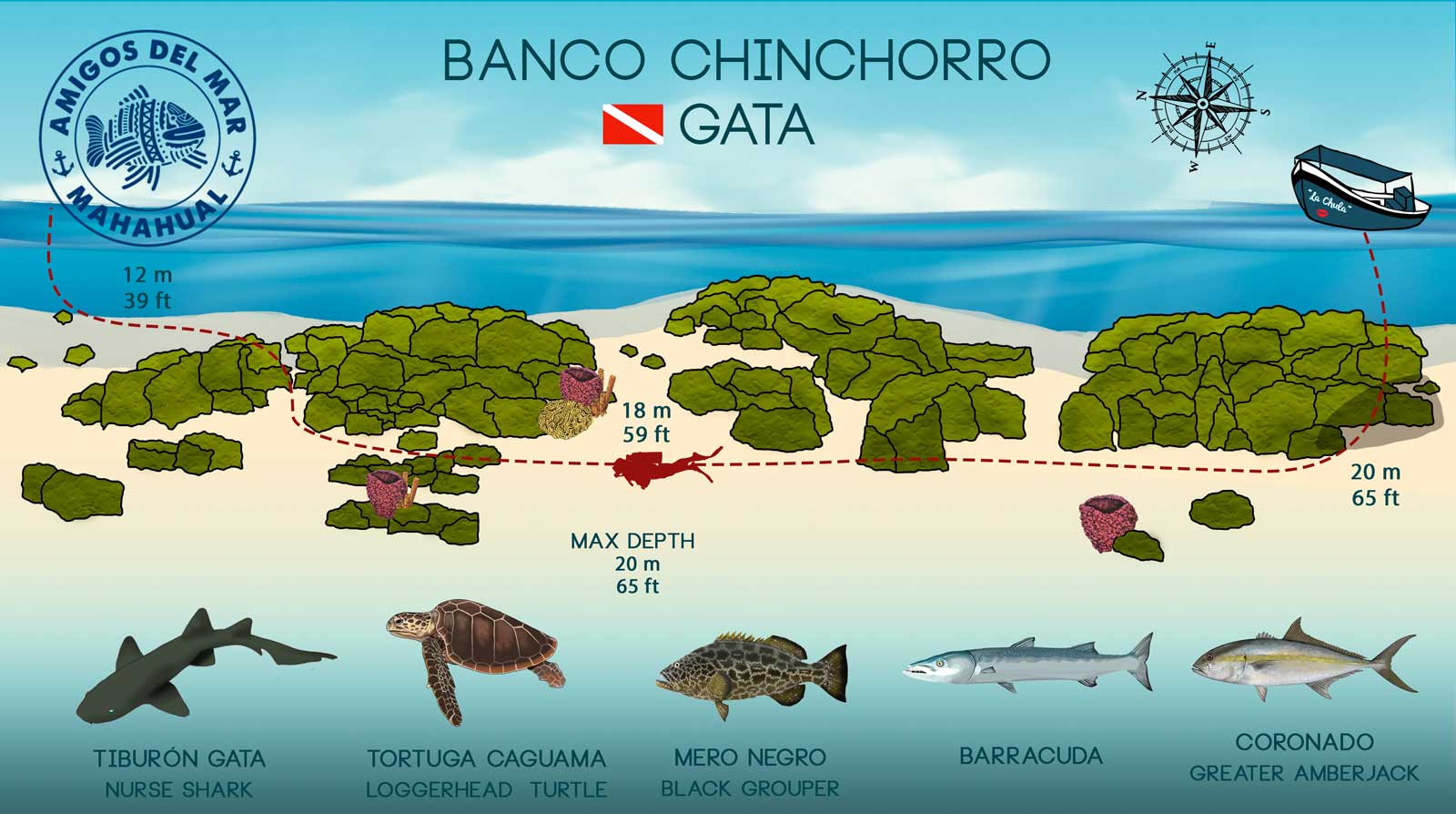
Gata
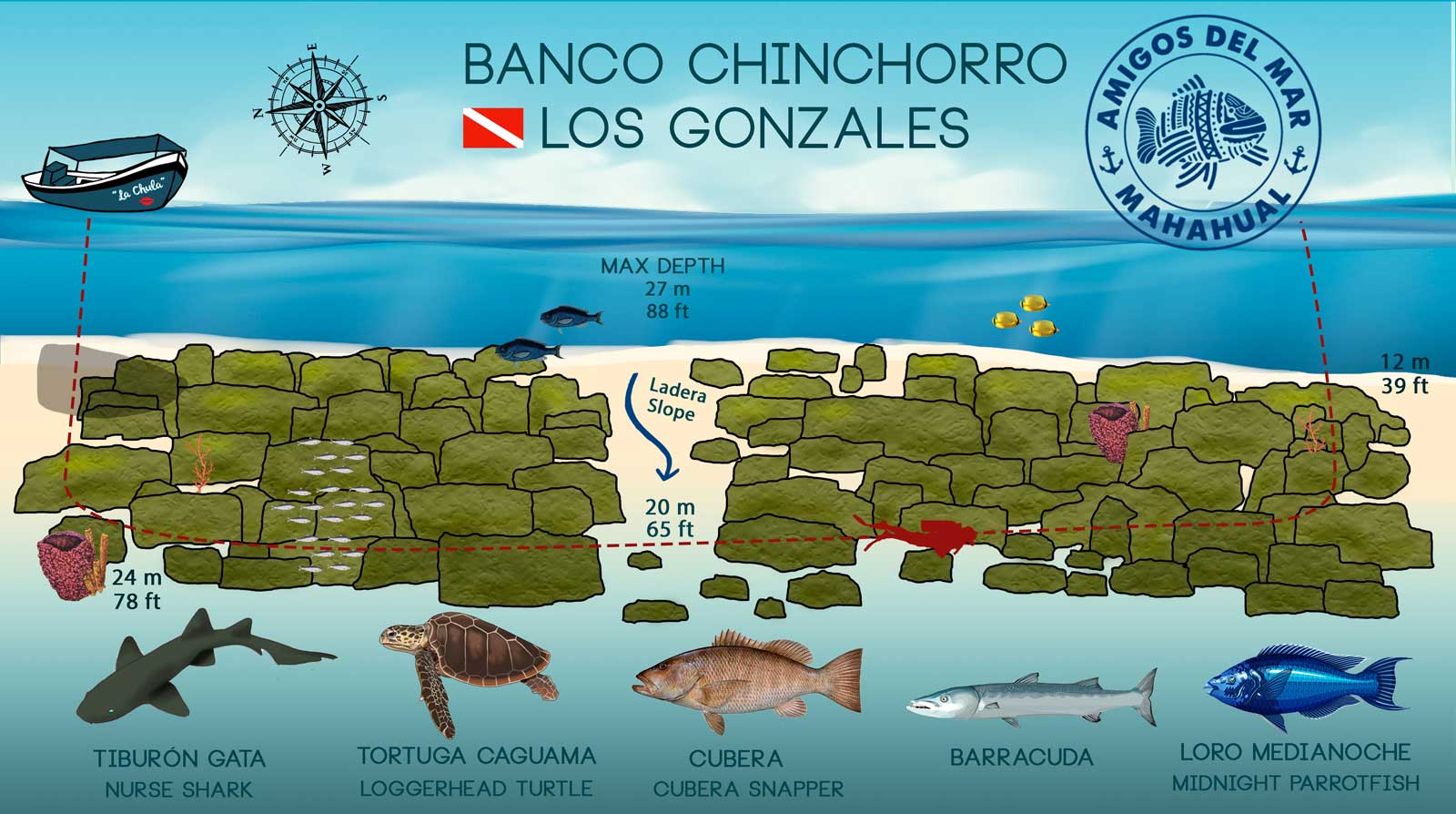
Gonzales 1 & 2
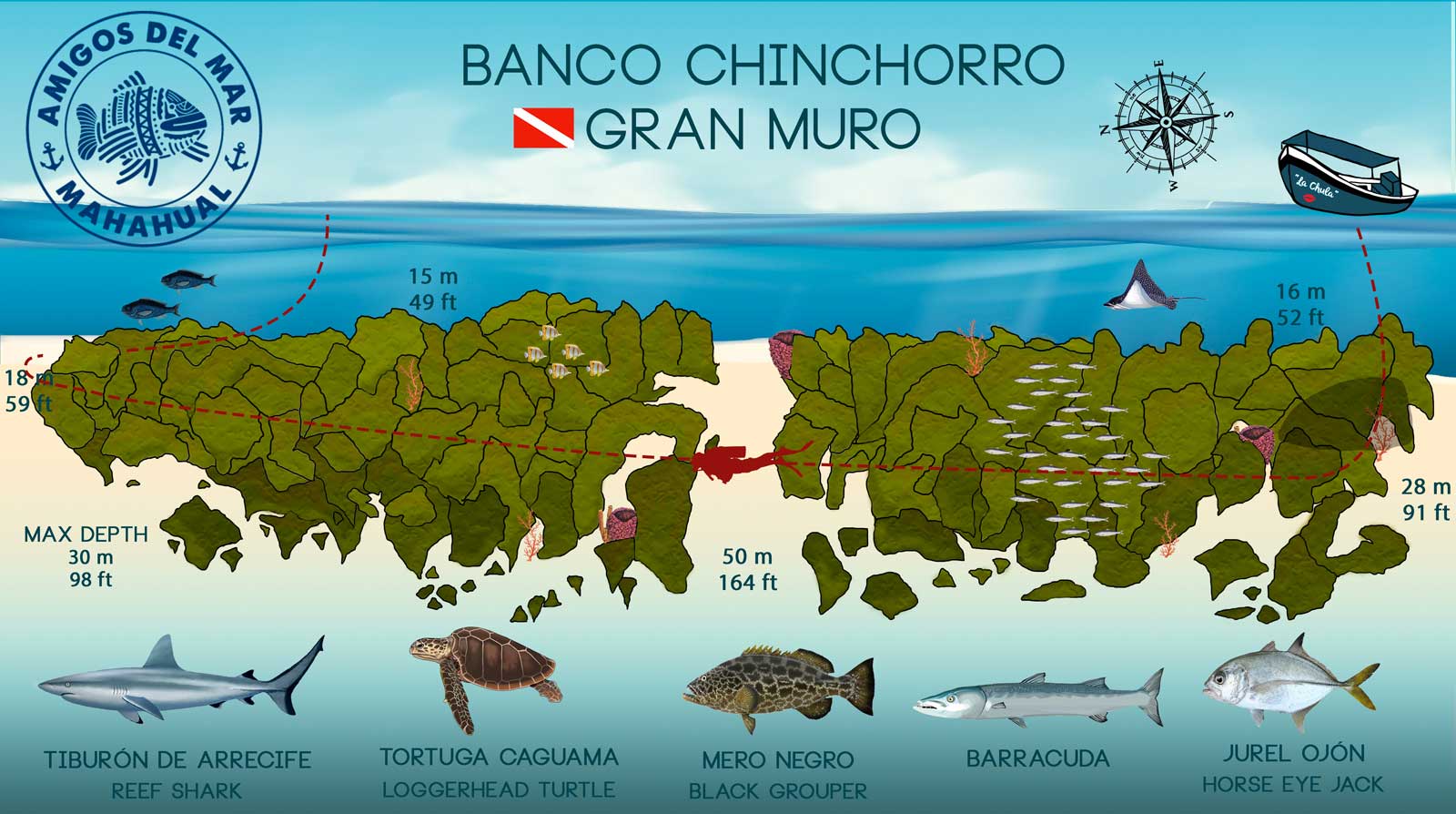
Gran Muro
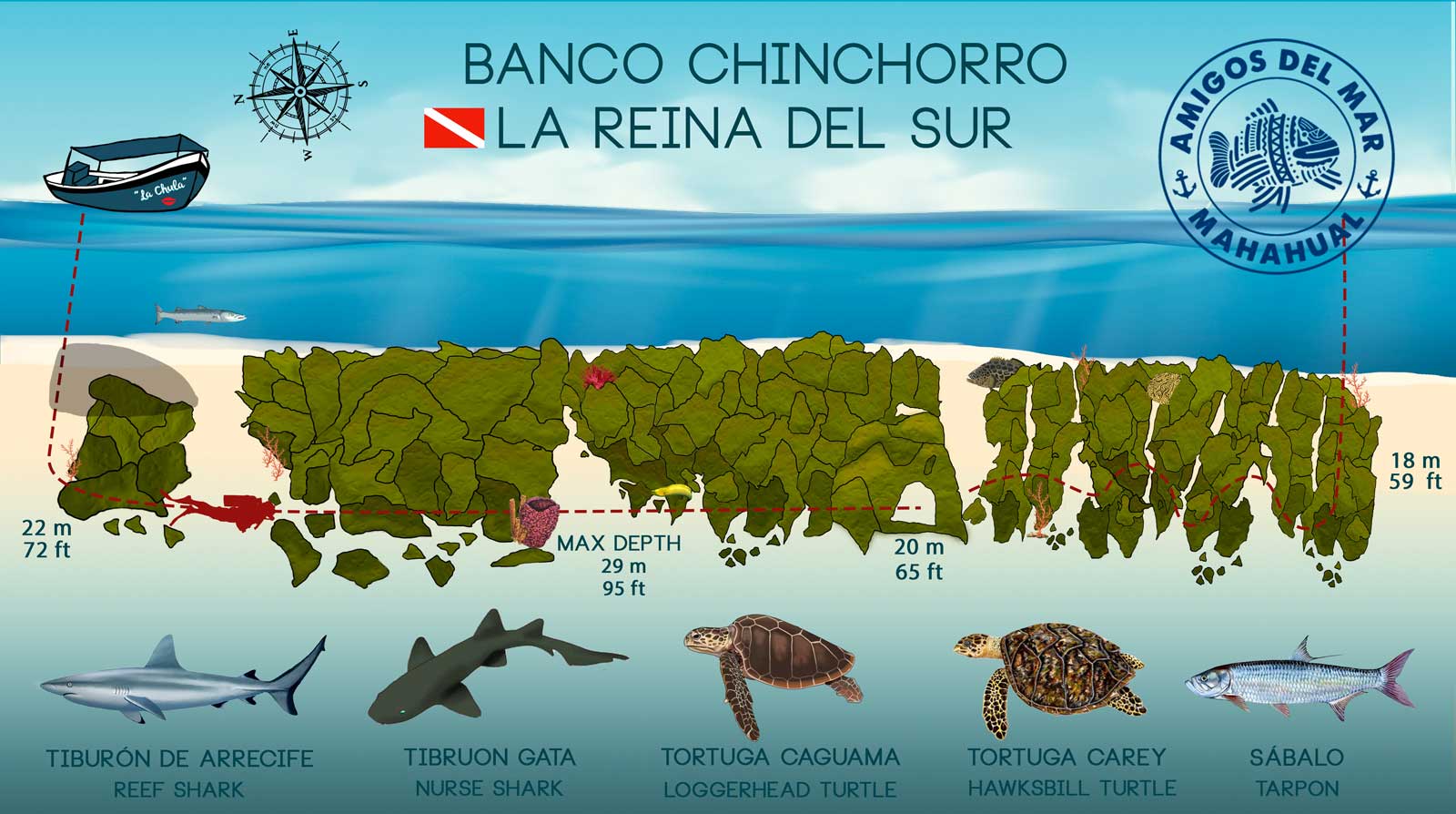
Reina del Sur
Translated to English, this site means Queen of the South and divers will understand why as they drift through more than a kilometre of colourful coral gardens. The average depth of about 15 metres so to find huge barrel sponges and black coral at these depths is quite unusual and an indicator that this is a very healthy reef system.
There’s also an incredible amount of marine life to enjoy including hawksbill, green, and loggerhead turtles, which can be seen darting in and out of the canyons and swimming happily over the reef.
There are schools of sardines which are amazing to watch as they dance and shimmer in the light, always on the lookout for predators such as jacks, tarpons and even African pampano. As the dives continue north, with the current usually helping, divers will notice pinnacles approaching and also that the reef drops down deeper to more than 30 metres.
You might spot huge black groupers lurking in the shadows, as well as nurse and reef sharks cruising around the rock formations. The maximum depth for this dive is about 20 metres and the dive duration is usually about an hour.

SS 40 Cannons
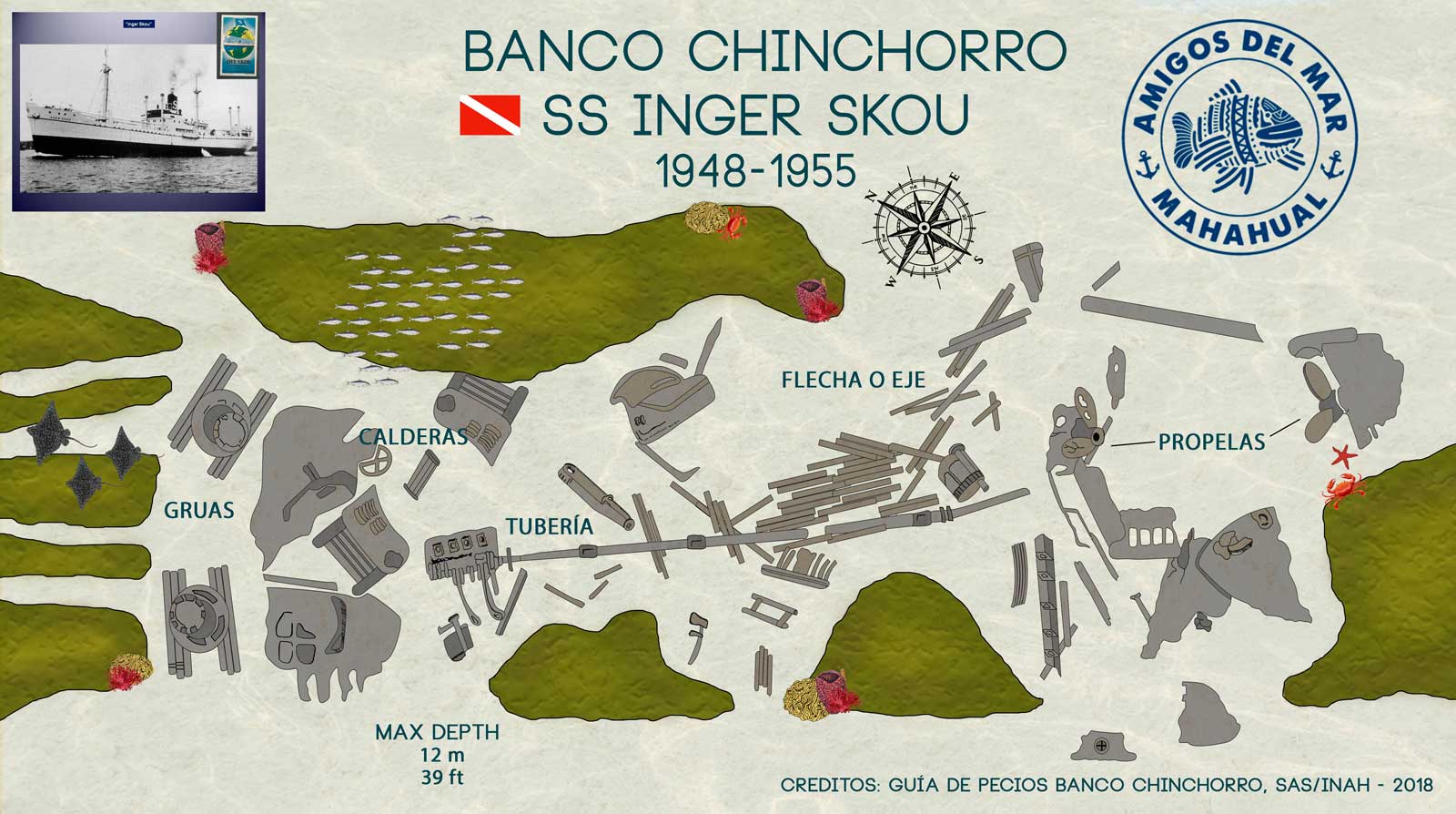
SS Inger Skou
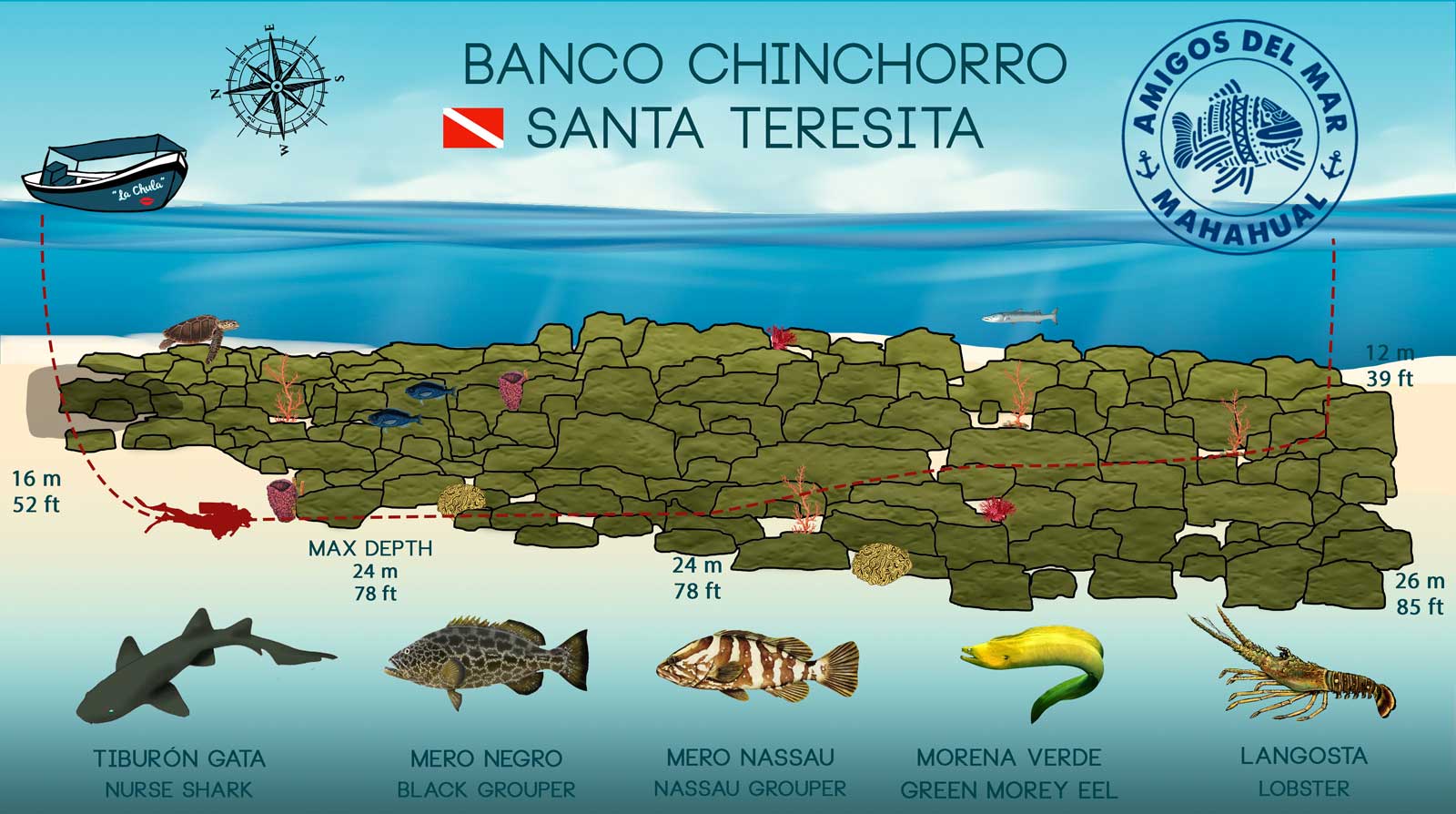
Teresitas
Our Boat: "La Chula"
Name: La Chula
Boat: 33 feet fully customized Panga boat with canopy covering all seating area
Engines: 2x140hp Suzuki 4 Stroke Twin Engines with Lean Burn Technology
Equipment: 30 racks for dive tanks (+2 additional tanks at rear of the boat)
Capacity: Max. 14 divers plus crew
